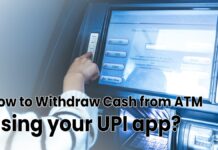The introduction of the UPI (Unified Payments Interface) has brought a revolution in India. With the highest Digital transactions in the world outnumbering the biggest economies like the USA, China, and Europe, UPI is the most advanced technology in the financial space.
Among the many features of UPI is the concept of Virtual Payment Address (VPA), which has garnered significant attention for its convenience and security.
In this article, we’ll discuss what a VPA is, its features, why having a VPA can enhance security, and much more.

Table of Contents
What is a VPA?
A Virtual Payment Address (VPA) is a unique identifier assigned to users of UPI-enabled payment systems.
It serves as a virtual network for bank account details like Account number and Bank IFSC Code, eliminating the need to disclose sensitive information such as bank account numbers and IFSC codes during transactions.
Essentially, a VPA acts as an alias for a bank account, making it easier for users to send and receive money securely.
Features of VPA
The following are the features of the VPA-
- It simplifies the payment process and reduces the risk of errors by using a single identifier instead of sharing complex bank account details
- VPA adds an extra layer of security by masking sensitive banking information with a Virtual Private Address which can be shared
- VPA is interoperable across different UPI-enabled apps and banks, allowing users to transact seamlessly
- Users can choose their desired VPA, making it personal and easy to remember
- By using a VPA instead of disclosing bank account details, users can protect their privacy and prevent potential misuse of personal financial information
How to Create VPA?
You can follow these steps to create a VPA-
- To create a VPA, you’ll need a UPI App like BHIM UPI, PayTM, etc., and register yourself into the app
- Now, login to your account using your login credential followed by navigating to the UPI section of the app followed by locating the VPA button
- After that, you’ll be prompted to choose a unique VPA of your preference. Your VPA typically follows the format “yourname@bankname” (e.g., ram@icici)
- After selecting your desired VPA, the app will check its availability and verify whether it meets the required criteria
- Some apps may require you to enter a secure PIN or authenticate the transaction using methods like OTP
- Once confirmed, your VPA will be activated and linked to your bank account. You can now use this VPA to send and receive payments securely through the UPI platform
How to Send Money Using VPA?
The following are the steps that you can follow to send money using VPA-
- Open the UPI app and login to your account using your login credentials
- After logging in, Navigate to the payment section followed by selecting the VPA option for sending money
- After selecting the VPA section, enter the fund receiver’s VPA followed by clicking on the proceed button
- This will confirm whether the VPA exists or not then, you’ll have to enter the amount you wish to transfer money using UPI
- Now, choose the account and enter the mPIN to verify the payment
- After verification is complete, the money will be sent to the VPA and you’ll receive the confirmation section
UPI transfer limit per day
The daily transaction limit for UPI transactions set by the National Payments Corporation of India (NPCI) is Rs. 1 lakh. However, there are exceptions to this limit:
- Payments to educational institutions and healthcare have a higher limit of Rs. 5 lacks per day
- The maximum daily transfer limit for UPI transactions can vary between banks, ranging from Rs. 25,000 to Rs. 1 lakh
- Some banks may impose weekly or monthly limits on UPI transactions instead of daily limits
Banks have various transaction limits depending on the bank, you’ll have to check with your bank to find out the limit for UPI transactions.
FAQ
A VPA is a unique identifier linked to your bank account that enables you to send and receive money securely through the Unified Payments Interface (UPI) platform.
Unlike a traditional bank account number, a VPA is easy to remember and can be customized. It eliminates the need to share sensitive bank details during transactions.
Yes, some banks allow customers to create multiple VPAs linked to a single bank account. This feature can be useful for segregating transactions or managing different payment purposes.
While some banks allow customers to change their VPAs, the process may vary. Check with your bank for specific instructions on modifying or updating your VPA.
Yes, it’s safe to share your VPA with trusted individuals or entities for sending and receiving payments. However, avoid sharing your VPA with unknown or unverified sources to prevent unauthorized transactions.
I’m Shiv Kumar, a graduate with a passion for finance, marketing, and technology. My journey into finance started with a desire to understand money management and investing.
Our main goal is to empower individuals through financial education. We believe that everyone should have the opportunity to build a strong financial foundation. Whether you’re a seasoned investor or just getting started, we provide articles, guides, and resources to help you navigate the financial landscape.
I invite you to join our community of financially savvy individuals. Feel free to ask questions, engage with our content, and explore the topics that matter to you. Together, let’s take control of our financial futures.




